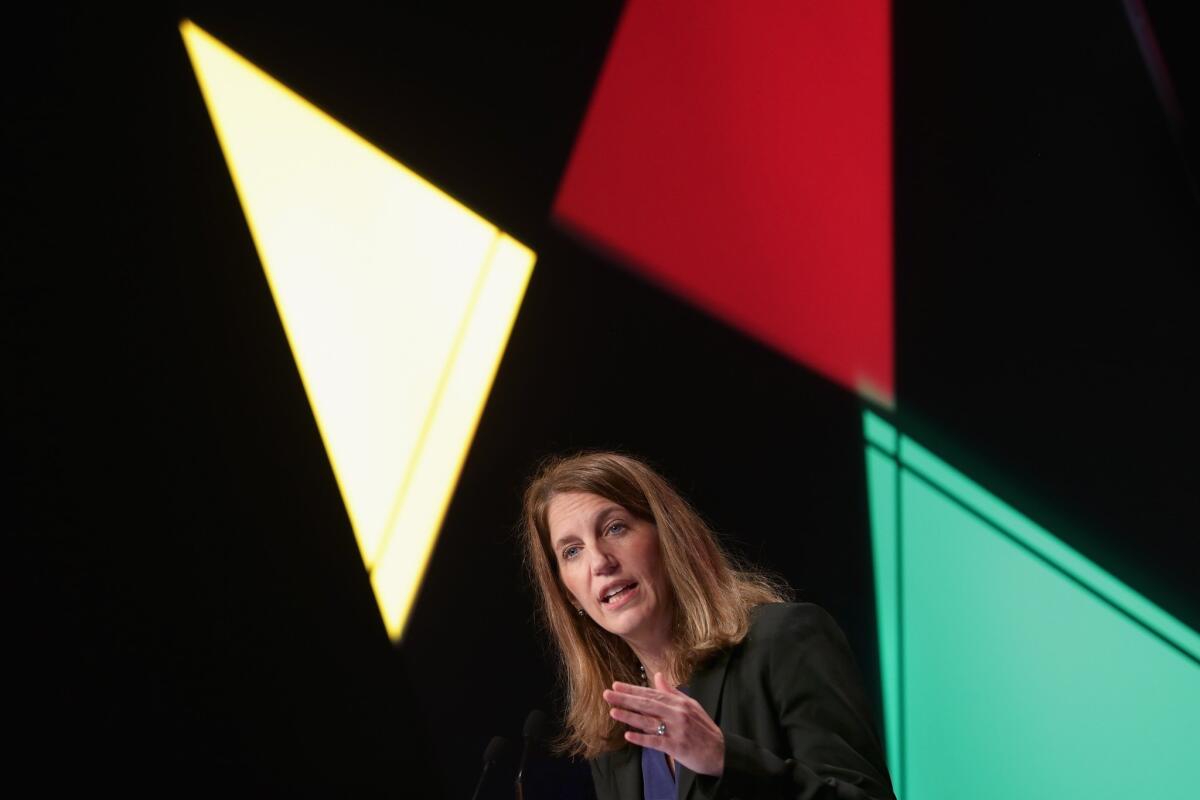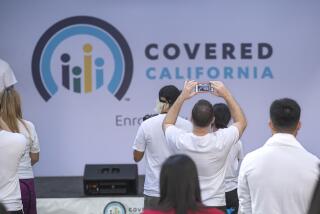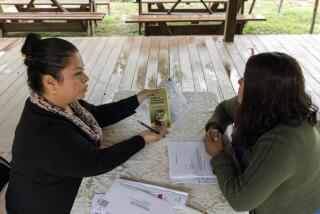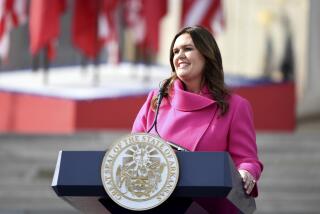Estimates lowered of how many people will sign up for Obamacare in 2015

- Share via
Reporting from Washington — The Obama administration has substantially scaled back estimates of how many people will sign up for insurance in 2015 through the federal healthcare law, projecting that millions fewer Americans will use marketplaces created by the Affordable Care Act.
Instead of 13 million customers in the second year of the marketplaces, as had been predicted, the Department of Health and Human Services now says 9 million to 9.9 million people probably will get coverage by the end of next year.
About 7.1 million people have health plans through the marketplaces today, according to the federal agency.
Administration officials said the downward adjustment reflected a more realistic assessment of how quickly a new program like the marketplaces can ramp up. Officials continue to sound upbeat about the marketplaces, which are scheduled to open Saturday for a second enrollment period.
“We are confident we’re going to have a successful open enrollment,” Health and Human Services Secretary Sylvia Mathews Burwell said Monday.
Nevertheless, the lower expectations drew criticism from Obamacare’s opponents and supporters.
“The administration is again trying to rewrite its definition of success,” Rep. Marsha Blackburn (R-Tenn.) said.
The new numbers also suggest that the administration is not prepared to reach more uninsured Americans, which administration officials have said is the most important metric, said Jon Kingsdale, who ran Massachusetts’ insurance marketplace from 2006 to 2010. That program was the model for the federal marketplaces.
“I am concerned that there is not a sufficiently sophisticated outreach effort to get people covered,” he said.
Surveys suggest that about 8 million to 10 million uninsured people have gained coverage this year since the marketplaces opened and Medicaid was expanded in many states under the law. Some 30 million people remain uninsured, however.
The law this year allowed Americans who don’t get health benefits at work to shop among plans on new state-based marketplaces.
Consumers making less than four times the federal poverty level — or about $94,000 for a family of four — qualify for subsidies.
Total enrollment in the marketplaces, although an imprecise metric, has been watched closely because sustained growth is considered vital to reducing the number of uninsured and keeping premiums in check by getting healthier Americans into the market.
By most measures, the marketplaces’ first year has been a success, with enrollment surpassing the Congressional Budget Office’s 2014 estimate of 6 million, and with new insurers joining for 2015.
The marketplaces beat the estimate even though nearly 1 million people who signed up for health plans this year lost coverage because they didn’t pay or were deemed ineligible, or because they found coverage elsewhere.
Administration officials said Monday that they had finished terminating coverage for those with unresolved immigration issues, which resulted in some 112,000 people losing their insurance in the federally run marketplace.
The nonpartisan Congressional Budget Office, which policymakers rely on to assess the effect of legislation, has estimated that 13 million people would enroll in the marketplaces in 2015.
The CBO projected that 24 million would enroll in 2016, and 25 million every year thereafter.
The swift increase in enrollment has long made supporters of the law anxious.
Technological issues, although far less severe than last year, continue to plague the enrollment system.
At the same time, the second enrollment period is only three months, half as long as the first. Burwell acknowledged Monday that reaching a new group of uninsured would be more difficult because they sat out the first year.
But administration officials said the lower enrollment estimate also took into account new research that showed more Americans were remaining in employer-provided coverage and more consumers were purchasing health plans directly from insurers, rather than using the marketplaces.
Finally, the health agency notes that previous coverage expansions of government healthcare programs have taken more than three years to be complete.
“The evidence from the Children’s Health Insurance Program and early Medicaid expansions under the Affordable Care Act suggest that the long-run steady state may not be achieved for as much as five years,” the Department of Health and Human Services noted in a memo explaining the new enrollment estimates.
Administration officials would not say what they thought enrollment would be in five years.
More to Read
Sign up for Essential California
The most important California stories and recommendations in your inbox every morning.
You may occasionally receive promotional content from the Los Angeles Times.











